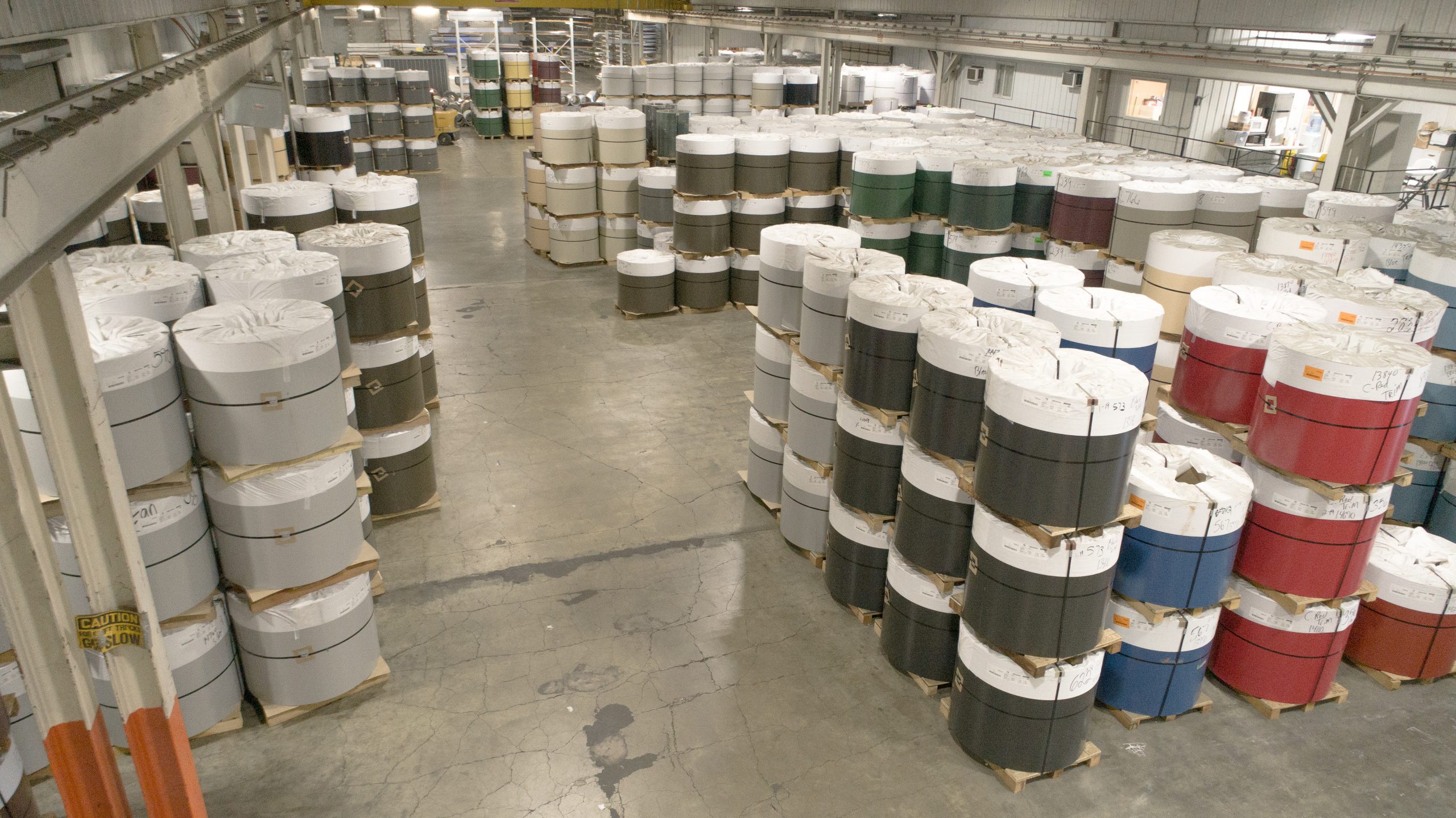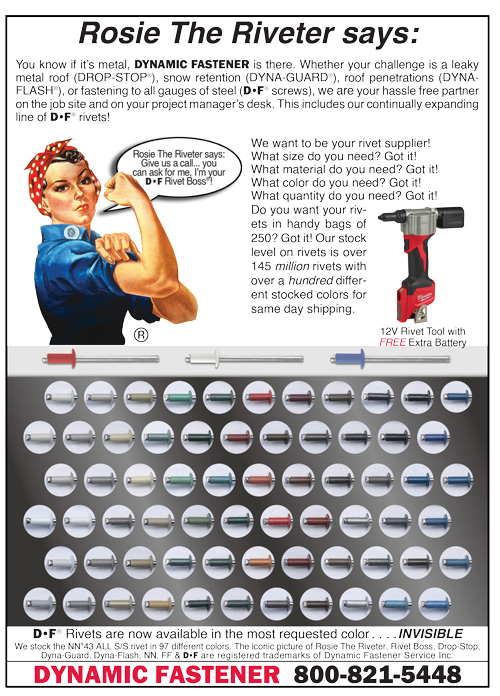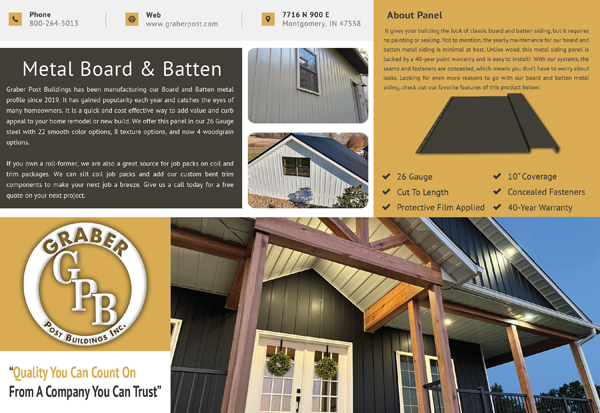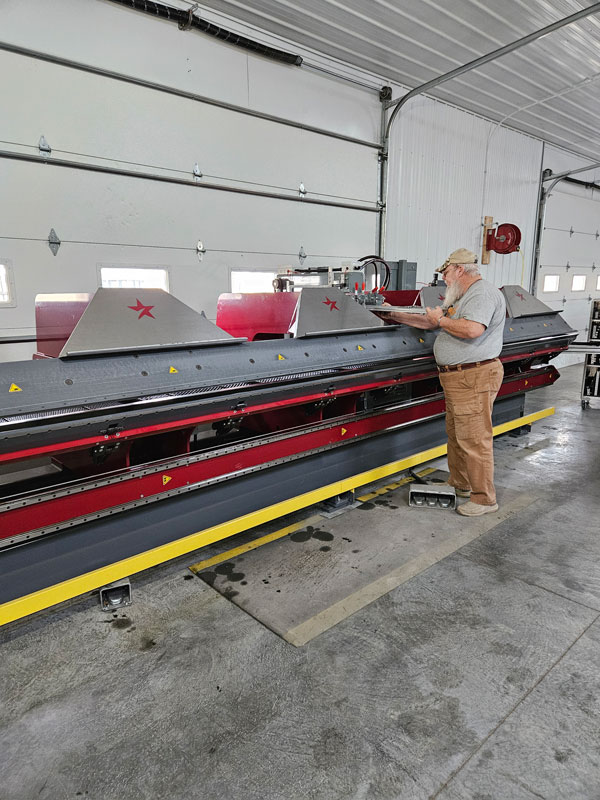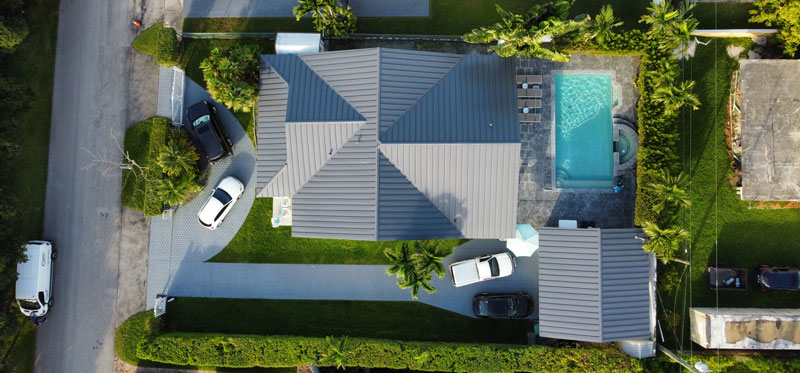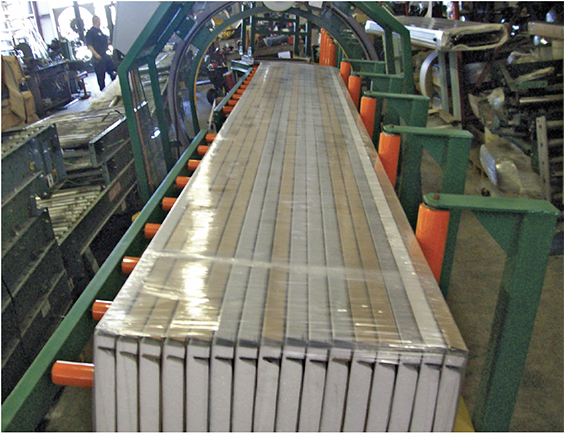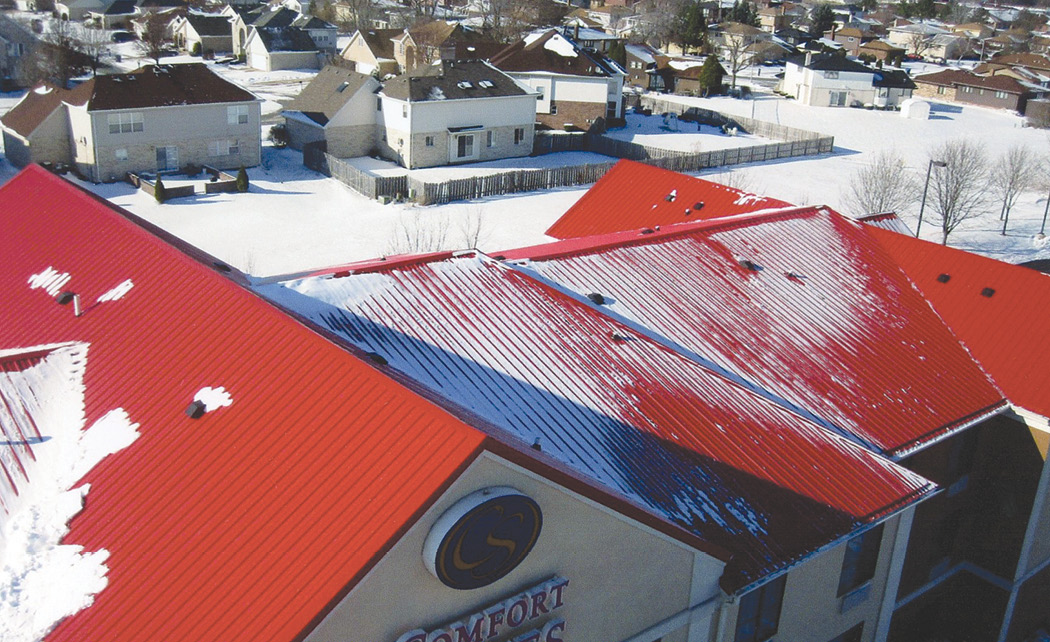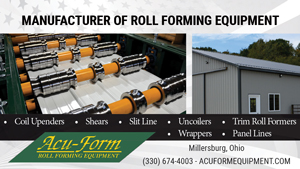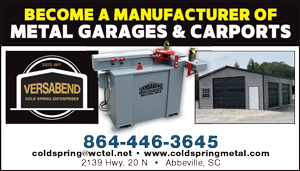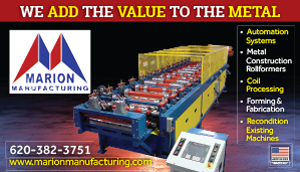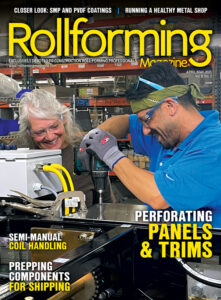By Karen Knapstein
Everyone has to deal with defects at one point or another. There are four different types of defects found in metal building components: coating defects, substrate defects, defects caused during manufacturing, and defects caused during installation. Metal formers can avoid making defective components and even lessen defects caused during installation.
Defects vs. Variances
As a roll former, you can’t control defects in the substrate or coating; however, those defects account for only a tiny percentage of complaints received. Conrad Farley, National Sales Manager at coil distributor United Steel Supply [https://unitedsteelsupply.com], says they have very, very few claims about defective coil. Although a lot can go wrong in the coil production process, he estimates there are issues with a minuscule amount (less than 1/10 of 1%) of all the material they distribute. “Controls, inspections, and checkpoints maintain quality all along the way,” he explains. “It’s very rare for defective material to get out.
“The finished product is only as good as the substrate,” he continues. “That’s always the case. If the surface to be painted isn’t prepared correctly before it’s coated, any defects you paint over will stand out. The Galvalume itself carries a 25½-year warranty from US Steel and Steel Dynamics (SDI). And a 40-year warranty on paint.”
Although coil steel is of very high quality, width, thickness, and coatings will still vary. Cole Wolford, Coil Division, Graber Post Buildings, Inc. [www.graberpost.com], explains there can be a variance in the coil thickness and width, which may affect how well the components are formed. As long as the variances fall within the mill specs that were provided with the warranty, it’s not a defect.
“A lot of guys don’t realize that there’s a variance until there’s a problem,” says Wolford. Depending on the mill, the width of the coil may vary up to 1/8”. “Some mills never vary, but it can happen.” The thickness of steel throughout the width of the coil can vary, as well. “That’s not something that happens often, but it does. There’s always going to be some variance; the question is if it’s enough to show up in the panel. If the center part of the coil is slightly thicker than the edges, or vice versa, you could come up with shape issues, or maybe a wavy edge on the finished product.”
There is also an allowable variance in the paint. “There’s an allowable variance that’s still within warranty spec. It doesn’t mean the paint company missed the mark. They may have had to switch up an ingredient or pigment. The paint is still within spec, but if you take a sample from the high end and one from the low end of the spectrum and put them together, you’ll see the difference.”
Manufacturing Defects
John Moore, Production Manager with Graber Post Buildings, explains a few of the defects that can crop up during the metal forming process. For example, during the slitting process, if the guide width isn’t set right, it can cause problems. “When you’re running through the slit line and recoiling, you have two to three different sets of guides,” he explains. “You have to allow a little bit of variance so the coil isn’t rubbing the guide. If the guide is too tight to the edge of the steel, it will cause a burr on the edge.” It’s important to know how to set the guides and to train new, inexperienced operators to set the guides to the correct spacing.
There’s not a lot that will go wrong with slitting as long the variables are set correctly. “You gotta be rewinding and decoiling at the right speed,” Moore explains. “Each slitter will be a little different. But the end goal is the same: You need to get as close to your target size as you can. Use a digital caliper to be as precise as you can to make the slit width the correct size; 1/8” can make or break a trim component. If you’re trying to make a trim and the coil is too narrow, you can’t make a good hem on that component so you’ve got to reject that coil. Or if you need an exact width of facia, 1/8” can be enough for some customers to reject your fascia trim. If we cut too narrow when we’re trying to train someone or run a line, we’ve had to trim it down to the next size of stock coil widths for a smaller trim component to salvage the majority of that slit coil.”
Moore continues: “Another big problem can occur if you’re slitting coil for another manufacturer that’s going to roll form it.” The slitter needs to know which side will be the underlap side. You don’t want to slit the side that will overlap because, over time, a rust stain will develop. It’s a cosmetic issue but can be mistaken as a defect. “If we’re slitting for somebody, we like to know which side is going to be the underlap side on the panel so the slit edge isn’t exposed to the elements. Because from a contractor or manufacturer standpoint, it could be viewed as a coil issue, but it’s not.”
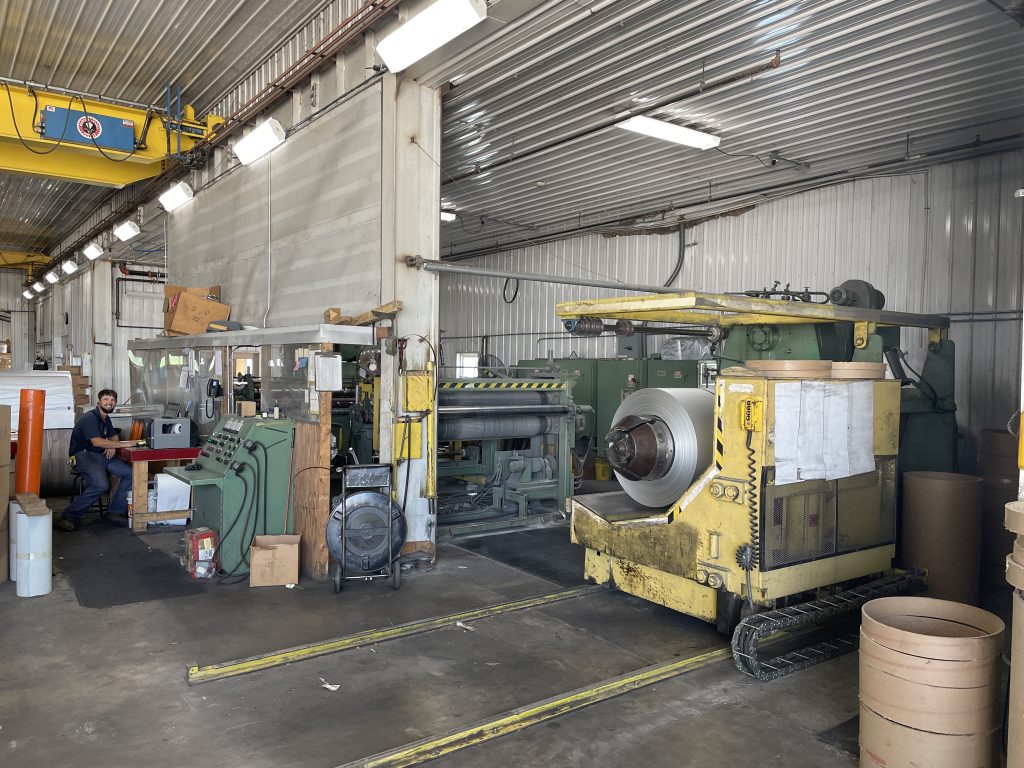
On the back end of the roll forming line, close attention needs to be paid to the shear. If the shear is getting dull, it can create a burr during cutting. As it comes out of the machine, the panel goes past the stack and comes back. If you let the panel ride the stack, it will make a scratch on the panel underneath. You can keep extra shear blades on hand, but the stacker needs to closely watch what’s coming off the machine. If a burr develops and you can’t switch the blade right away, put two people on stacking. “You’ve got to get it to the jobsite without scratching the material,” he says.
“The main thing is you really need to know how to adjust your machine and have operators who are paying attention,” says Moore. “In today’s market, trained operators and workers are what you need. If you have a bunch of turnover and new guys coming in, you’ll have more issues. And those issues will show up a lot more on the roof than when it’s coming off the line because the lighting is different.” Something not obvious under LED lighting may be much more obvious on a roof in bright daylight.
Installation Defects
Most metal defects are caused during installation. From the perspective of America’s largest distributor of painted coil, Farley explains that the great majority of reported defects are caused by poor installation. “So many people take shortcuts or are just new and learning how to put metal on correctly. Metal just doesn’t get applied as well as it should be,” he says.
This industry has grown so fast, there are a lot of people who are new to it. He recommends roll forming companies train the contractors they do business with; it’s a great way to avoid installation mistakes. For example, presenting installation classes at an open house event, perhaps on a portable building, will discourage poor installation practices and encourage good ones. He says it’s critical to teach people the right way to do things, “otherwise people are out there trying to figure it out on their own.”
For example, contractors cut panels on the jobsite, which creates metal shavings that are hot. “The shavings attach themselves to that panel. If they don’t brush them off, you’ll start seeing rust lines. Those are the types of things that are seen as defects on the backend” but that are contractor and installation issues.
In summary, while you can’t do anything about substrate and coating defects, you can minimize manufacturing flaws and lessen defects caused during installation. Even cosmetic flaws can have a negative impact on the reputation of metal as a building material. If the metal building market is to continue to grow with a sound reputation, metal roofs and buildings need to look and perform at their best. RF


